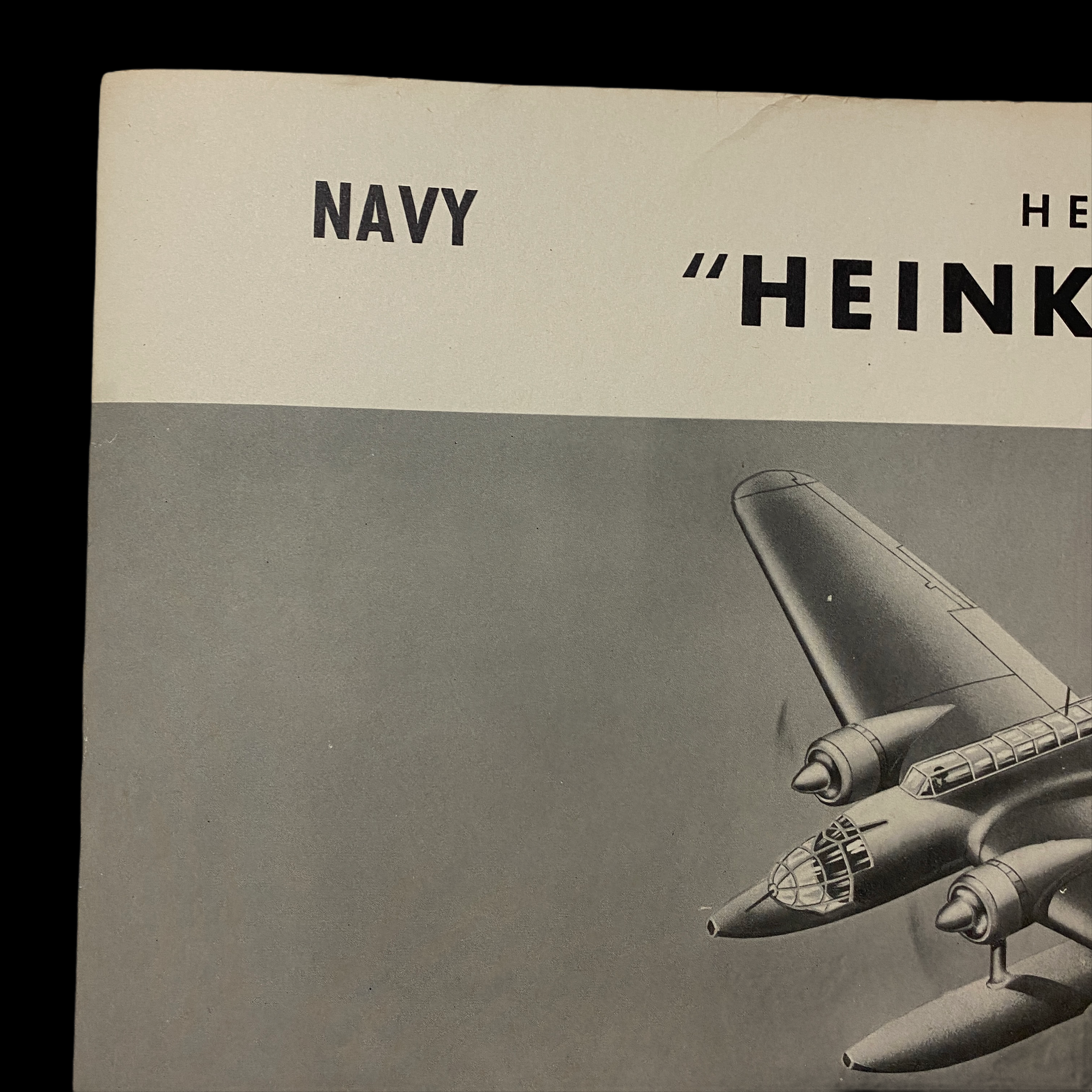German Navy Reconnaissance "Heinkel 115K2" Aviation Training W.E.F.T.U.P. ID Posters






German Navy Reconnaissance "Heinkel 115K2" Aviation Training W.E.F.T.U.P. ID Posters
Size: 19 x 25 inches
This original ‘RESTRICTED’ aircraft identification poster was published by the U.S. Naval Aviation Training Division November 1942. This poster was posted as a training tool as well as an in theater ID poster to help U.S. and other Allied pilots, bomber crews and Naval personal to identify Allied and enemy aircraft. W.E.F.T.U.P. or Wing, Engine, Fuselage, Tail, Undercarriage, Peculiarities was a system set up for the purpose of aircraft identification and recognition.
World War II saw some of the first introduction of these aircraft ID poster to prevent friendly fire and more accurate plane recognition in combat. It was believed these posters alone could save countless lives from friendly aircraft-on-aircraft or friendly anit-aircraft fire. These posters also could cut down precious second pilots, bomber gunners, and naval gun crews would have to ID a plane flying towards them intern saving their lives by shooting first.
Each poster provides the silhouettes, dimensions, and relevant information to educate both air and ground personnel in aircraft identification. Immediate identification of aircraft, friendly or not, was essential in order for the observer (whether in the air e.g., pilot, gunner, or patrol observer, or on the ground, e.g., anti-aircraft crew) to determine his next course of action (e.g., acknowledge, attack, evade, or report). Each poster details a large clean sky and background image of the specified aircraft located as the main top imagine on the poster. It also contains important ‘peculiarities’ such as where certain gun emplacements are located, other special aircraft features, as well as wing and length measurements.
Heinkel He 115:
The Heinkel He 115 was a three-seat World War II Luftwaffe seaplane. It was used as a torpedo bomber and performed general seaplane duties, such as reconnaissance and minelaying. The aircraft was powered by two 960 PS (947 hp, 720 kW) BMW 132K nine-cylinder air-cooled radial engines. Some later models could seat four, had different engines or used different weapon arrangements.
At the beginning of the war, the He 115 was used for dropping parachute mines in British waters, normally aiming for narrow passages close to busy ports on the English south coast; the River Thames was also a prime target. The aircraft had its finest moment on anti-shipping operations against Arctic convoys from bases in northern Norway. Because the first convoys lacked air cover, the slow and lightly armed He 115 was less vulnerable than near the English coast. With the appearance of carriers and escort carriers, coupled with new Soviet heavy fighters like the Petlyakov Pe-3bis, Luftwaffe air superiority over the convoys was challenged and losses increased.
Apart from its use as a minelayer and torpedo bomber, the He 115 was used for coastal reconnaissance and by KG 200 to drop agents behind enemy lines.